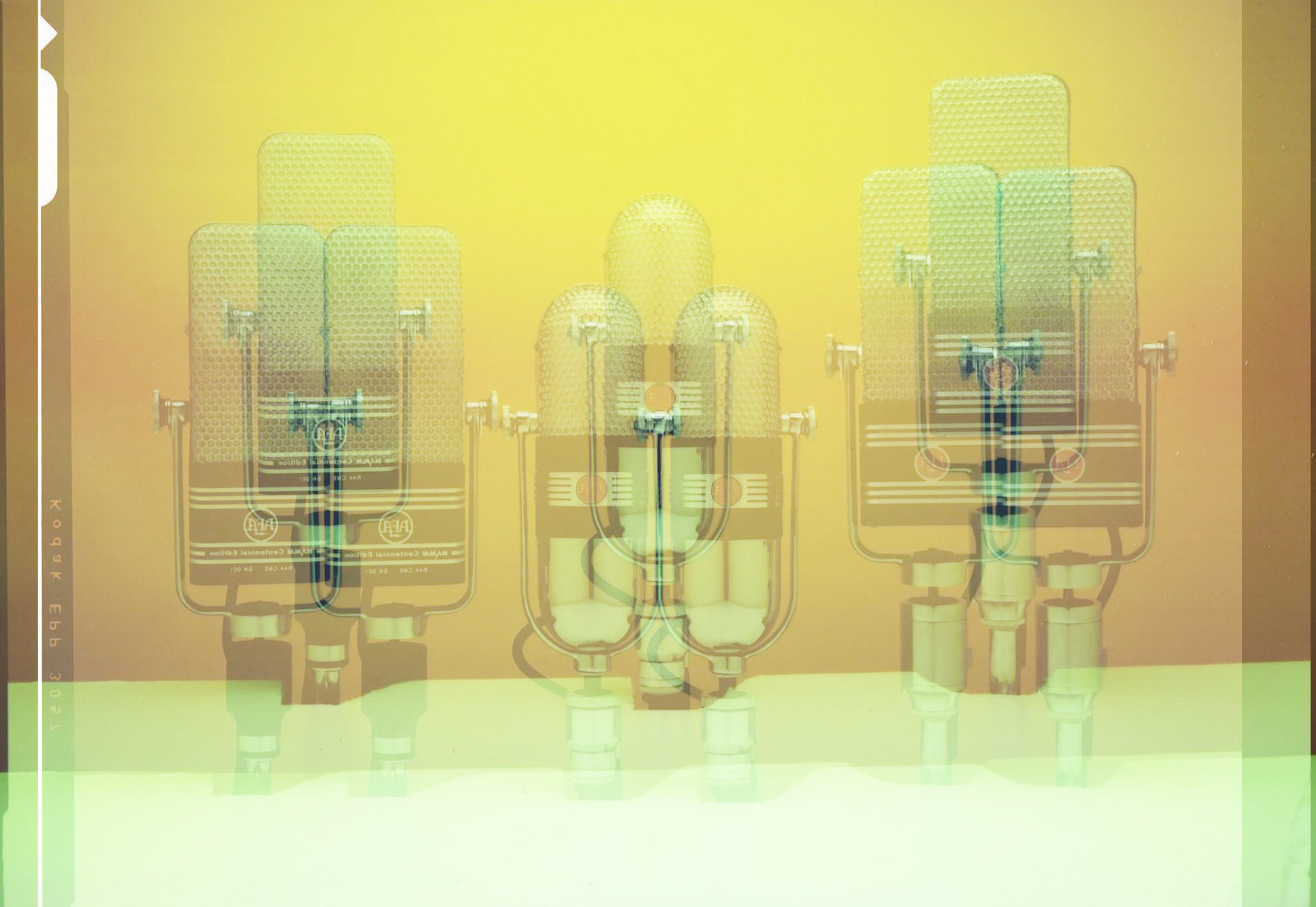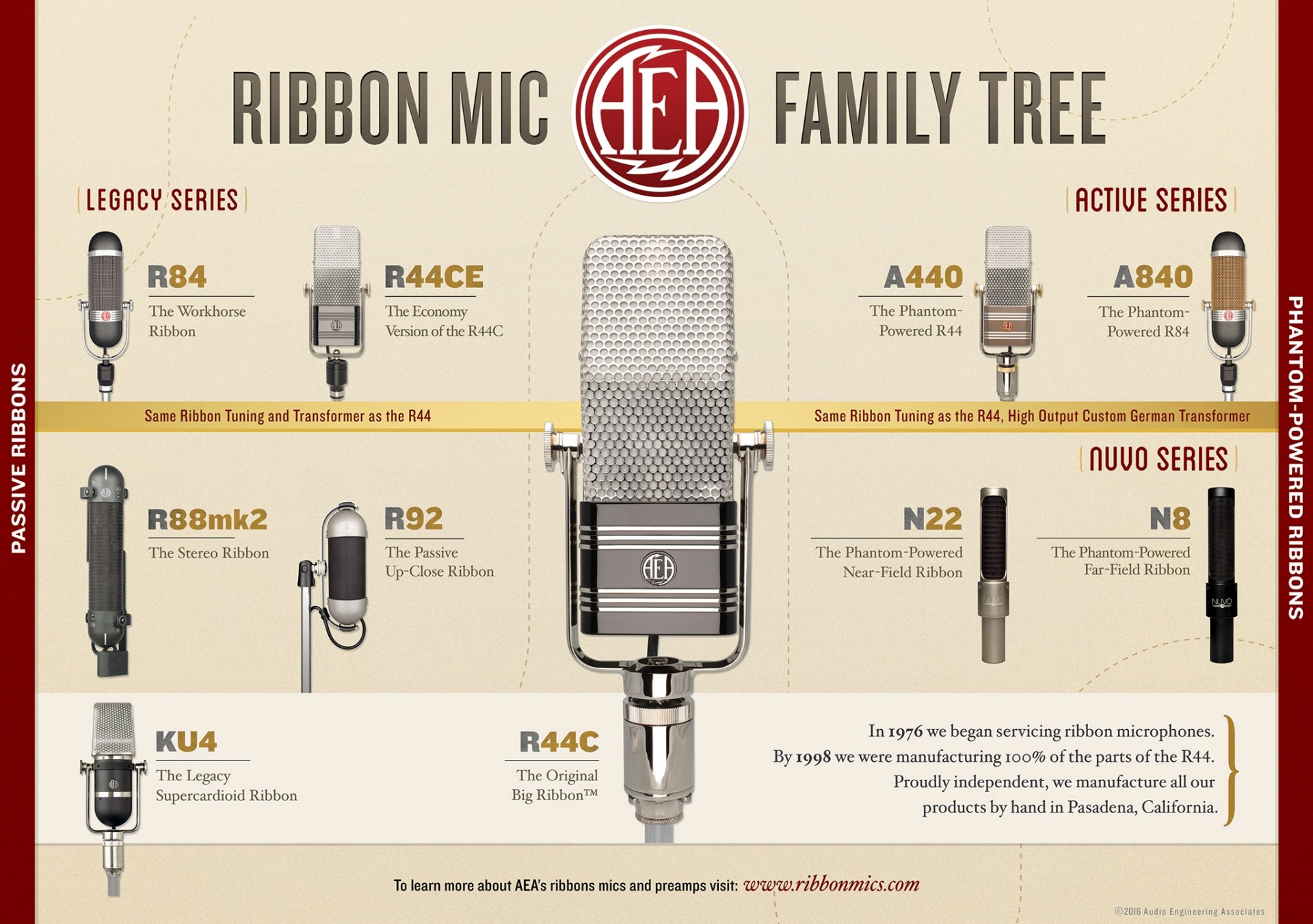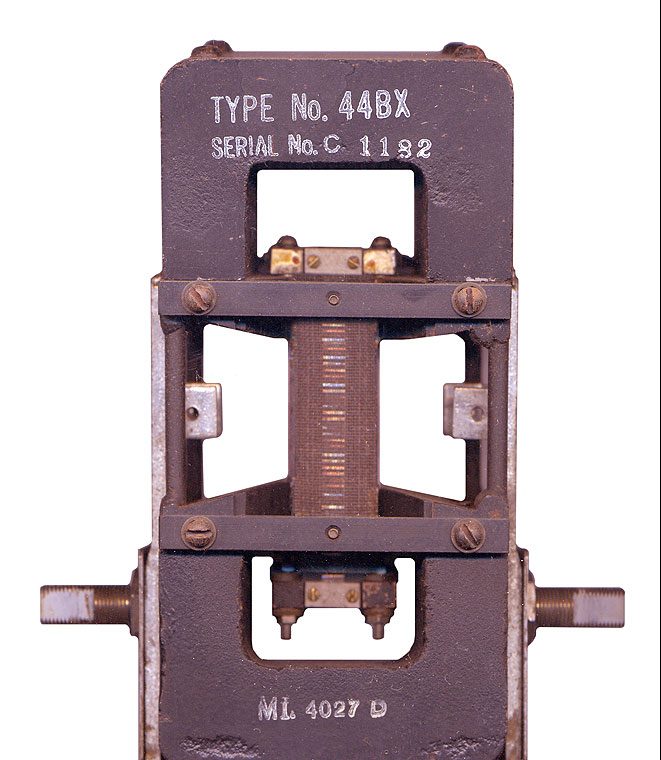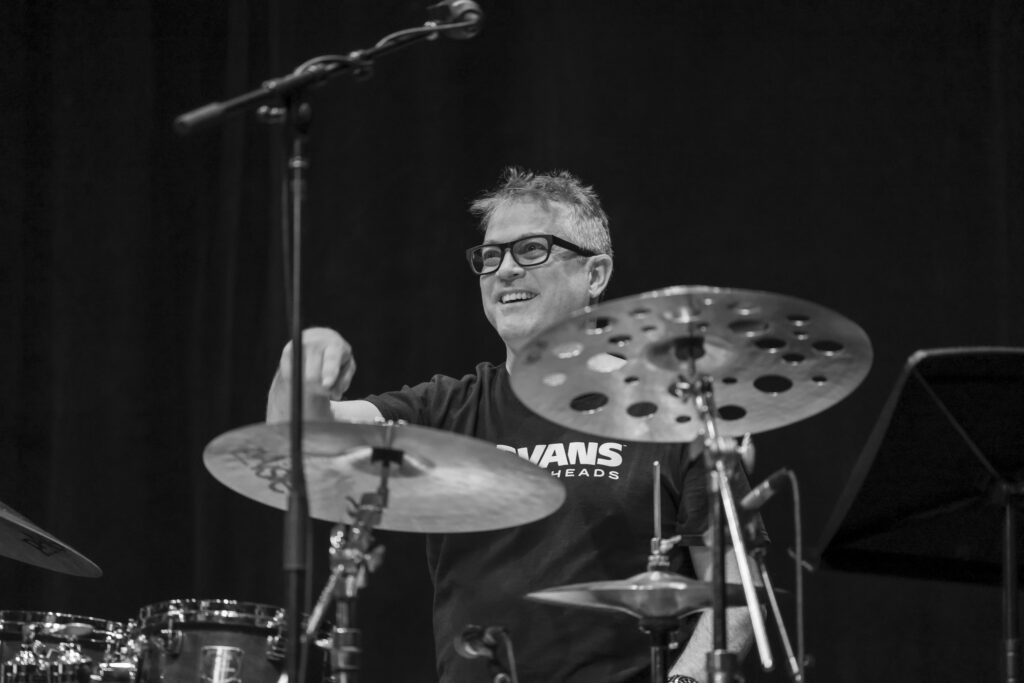

The History of Ribbon Microphones: From RCA to AEA
The ribbon microphone holds a unique place in the evolution of audio recording. Its warmth, detail, and natural sound qualities have endeared it to musicians, engineers, and producers for a century. But the story of the ribbon mic is about far more than the mics. It’s also about the people, companies, and music that have used them to impact the culture around them.
Let’s look at this remarkable technology’s journey from its golden-age prime to its short-lived lull and the roaring resurgence fueled by companies like AEA.

From Witnesses Of Words by Marco C. van der Hoeven
The Birth of an Icon: The Microphone’s Technological Pioneers
Microphones existed well before ribbons came around in the early 1900s. Alexander Graham Bell is credited with the first mic patent for his revolutionary new telephone. Around the same time, Emile Berliner and Thomas Edison were hard at work on their own design. David Edward Hughes also introduced his carbon microphone, the candlestick still an icon of the era.
The first vacuum tube-powered condenser microphones were hot on the carbon mic’s heels. But these condensers weren’t the Hi-Fi-sounding models we know today. Though they presented a huge step forward in microphone design, they were another mic technology that would dominate the golden age of broadcast, film, and music.

The Ribbon Microphone Takes Over
The 1920s were a hotbed of innovation, and audio was no exception. At Telefunken in Germany, Dr. Walter H. Schottky and Dr. Erwin Gerlach were creating the technology that would become the ribbon microphone.
Their design used sound waves to vibrate a thin, lightweight ribbon (usually of aluminum) suspended in a magnetic field. This motion generated an electrical signal that yielded a warmer, more detailed sound than other microphones of the day.
Their work led to the earliest ribbon mics, heralded as the first great microphones.

RCA: America’s Ribbon Mics
Meanwhile, across the Atlantic at RCA, Dr. Harry F. Olson was refining the design to make these new mics commercially available and easier to produce.
RCA’s early models, like the Photophone Type PB-31 (1931), found immediate favor in radio broadcasting, with institutions like Radio City Music Hall embracing their smooth, balanced sound. The iconic RCA 44BX (more on this mic in a minute) further solidified the ribbon mic’s dominance in studios, defining the essence of jazz, big band, and a golden age of music. RCA quickly became the driving force in ribbon microphone development.
Ribbon microphones weren’t only used for recording music, however. They also became the standard for early cinema and broadcasting in the hands of engineers at Western Electric, the manufacturing arm of Bell Laboratories.
image source: https://www.coutant.org/rca44bx/index.html
The Ribbon’s Sound: A Weakness and Their Greatest Strength
The magical warmth we all relate to classic, old recordings is a testament to the sound and response of those early ribbon microphones. Their inherent high-frequency roll-off and gentle taming of upper frequencies gave recordings a smooth texture that seemed natural to the human ear.
However, many other factors contributed to this sound. From the 1930s through much of the 20th century, recording involved a complex chain of analog—often tube—based equipment. Tape machines, mixing consoles, compressors, and even the vinyl records music was played on all added their own layer of warmth.
The sound is iconic today, but there was a definite need for more clarity and detail. Sound engineers wanted a microphone that could cut through and overcome the sonic limitations of the era’s signal chains.
Additionally, older ribbon mics were passive, requiring specialized preamps with a tremendous amount of gain to capture their optimal performance. Many consoles of the time didn’t offer enough output to drive them effectively, making ribbons seem noisy and dull-sounding. These factors, rather than inherent flaws, led to ribbon mics falling out of mainstream favor.
Changing Tides: The Rise of Condenser Microphones
The earliest condenser microphones lagged behind ribbons in frequency response but steadily evolved into the bright, full-sounding standard we use today. By the late 1950s and 1960s, their sound – sometimes even hyped in the high frequencies – gained popularity. This improvement was perfectly timed as rock and roll had taken over and demanded increased sonic energy and an emphasis on high-end.
Soon, condenser mics exploded in popularity, replacing ribbons in nearly every sound source and application. The ribbon mic seemed doomed to go the way of Hughes’ carbon mics.

Ribbon Champions and the Seeds of Revival
Despite shifting trends, the ribbon microphone never truly vanished. Even during the rise of the condenser, producers and engineers leaned on their vintage ribbons to get their unmistakable performance on everything from brass ensembles to electric guitar amplifiers.
While ribbons weren’t the flavor of the month, brands like Beyerdynamic in Germany and Coles in the UK upheld the tradition, refining their designs and creating new ones catered to specific applications. Of course, there was also a company out of Pasadena, California, doing its part to keep classics like the old RCA 44 series alive.
AEA: Keepers of the Flame and Innovators
AEA has been producing the parts for and repairing the original RCA 44 and Coles microphones since 1976. Though not a manufacturer then, we ensured the iconic mics of the past stayed in working order and were an essential addition to every professional mic locker.
This repair work gave AEA a unique knowledge of the 44 and years of experience crafting their components. Seeing an opportunity and the innovative changes coming to the industry, our founder, Wes Dooley, turned his focus to offering full replications (AEA R44C) of these iconic models down to using RCA’s original methods and techniques.
Dooley was right. Massive changes were coming, and AEA was now poised to be a ribbon mic leader in the new era.
The Digital Revolution Reignites the Ribbon
The 1990s saw a seismic shift with the advent of digital recording. Digital’s transparent sound exposed the sometimes harsh nature of the condenser microphones that had become the norm. In search of a smoother sound, engineers rediscovered the ribbon microphone. Its characteristic roll-off gave their digital tracks the natural warmth and pleasing balance they had been missing.
Inspired by this renewed interest, companies like Royer Labs and their R-121 revitalized the technology with innovative designs, expanding the possibilities for modern recording. But none of them had the hands-on experience of AEA or our understanding of the technology’s potential.
We quickly added mics like our classic R84, the stereo R88, and the innovative NUVO series to the AEA family. These designs propelled us to the forefront of the modern ribbon movement. We continue to innovate daily with everything from our TDI direct box to preamps.
Ribbon Microphones Today: Legacy and Versatility
The ribbon microphone quickly made its mark in audio history, and we’re glad to say it is still driving recording into the future. While respecting our industry’s heritage, today’s ribbons are a testament to ingenuity and refinement. Robust materials, extended frequency response, and phantom-powered active electronics add convenience and flexibility the originals can’t touch. They excel in everything from delicate acoustic instruments to drum overheads and soaring vocals.
While preferences will always evolve, the ribbon mic’s warmth, detail, and honest representation of your sound source secure its place in the hearts of engineers, producers, and musicians worldwide. It’s a timeless tool for capturing the essence of sound, past, present, and future.


